Through working on this project, I was able to learn and create an extensive modular design system in Sketch, taking advantage of Anima to create powerful Sketch symbols that take out the a lot of the menial copy and pasting and symbol instancing in high fidelity design, as well as being responsive to boot. An added benefit was that our developers were able to build full components from the blueprints of my sketch symbols.
The Problem
With over 100 jobs being created on the platform monthly, getting clients to post jobs themselves is a huge need. However, our systems and processes are too confusing, and very few, if any, users create a job by themselves.
Outcome
I had the opportunity to work on the modern Create a Job feature, a guided process on how to create and post jobs that will get them the best workers that fit their unique needs.
Role
Product Designer
Tools
Sketch, Zeplin, Principal, Overflow, InVision
Team
Three engineers, one project manager, two product owners, one designer (me)
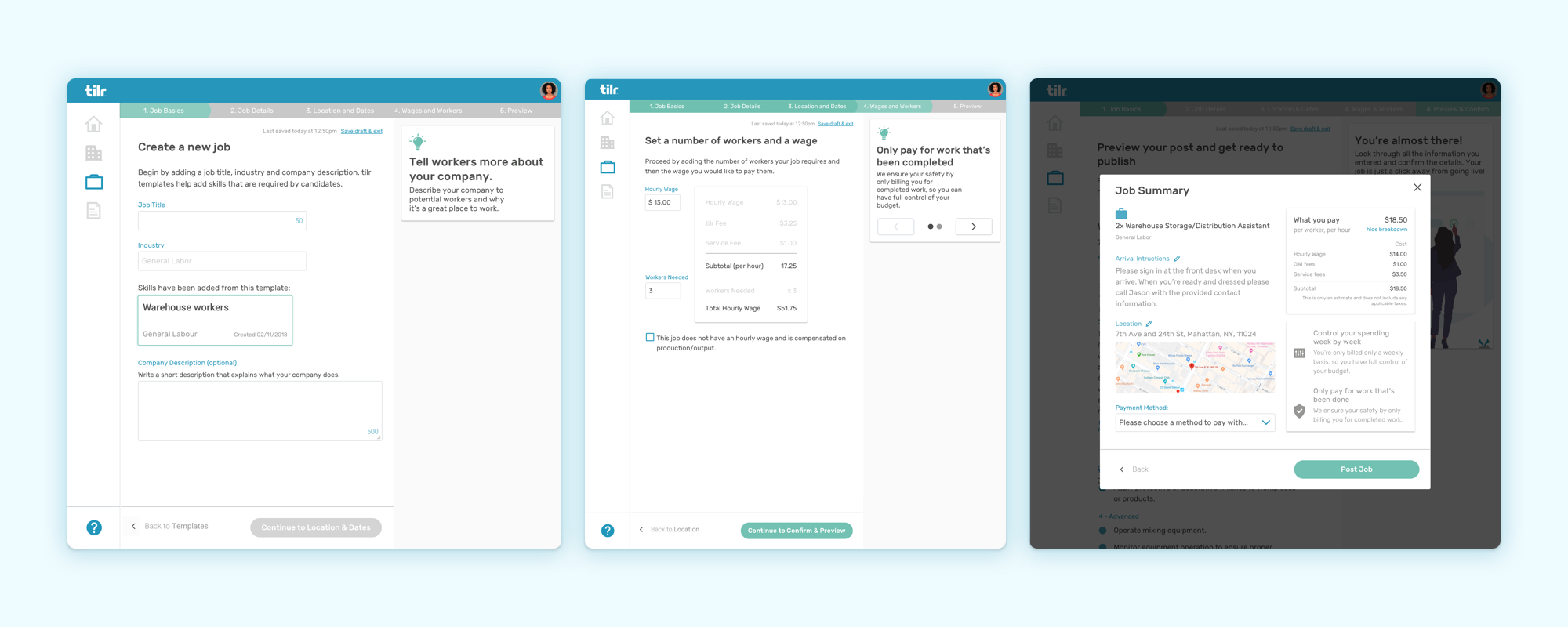
"Be transparent. Build trust. Guide and show value so users can empower themselves through the platform."
— Steve Luu, VP of Growth and Analytics, tilr
Research
I began my approach to the issues by going through a holistic overview of our current Create a Job flow with our product owners. I then proceeded to interview our core users (our internal member engagement and fulfillment team, MEF) to find out their pain points and obstacles.
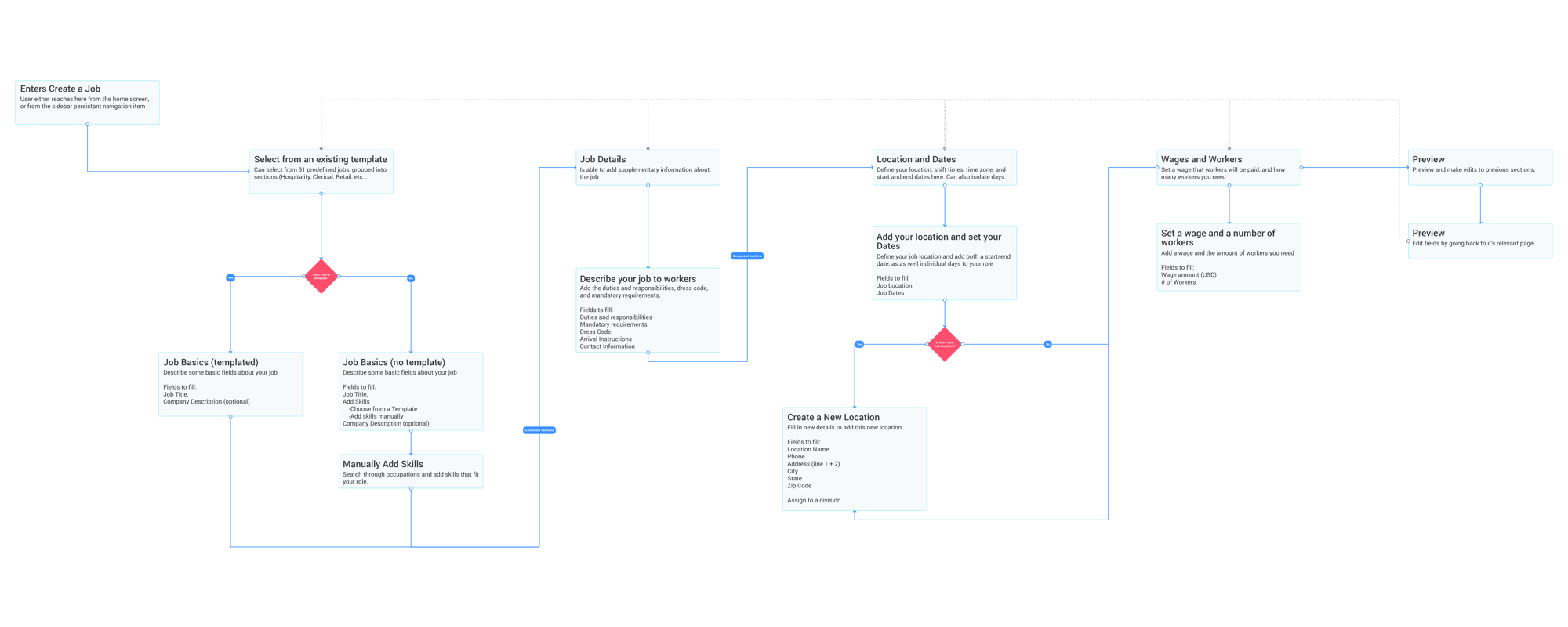
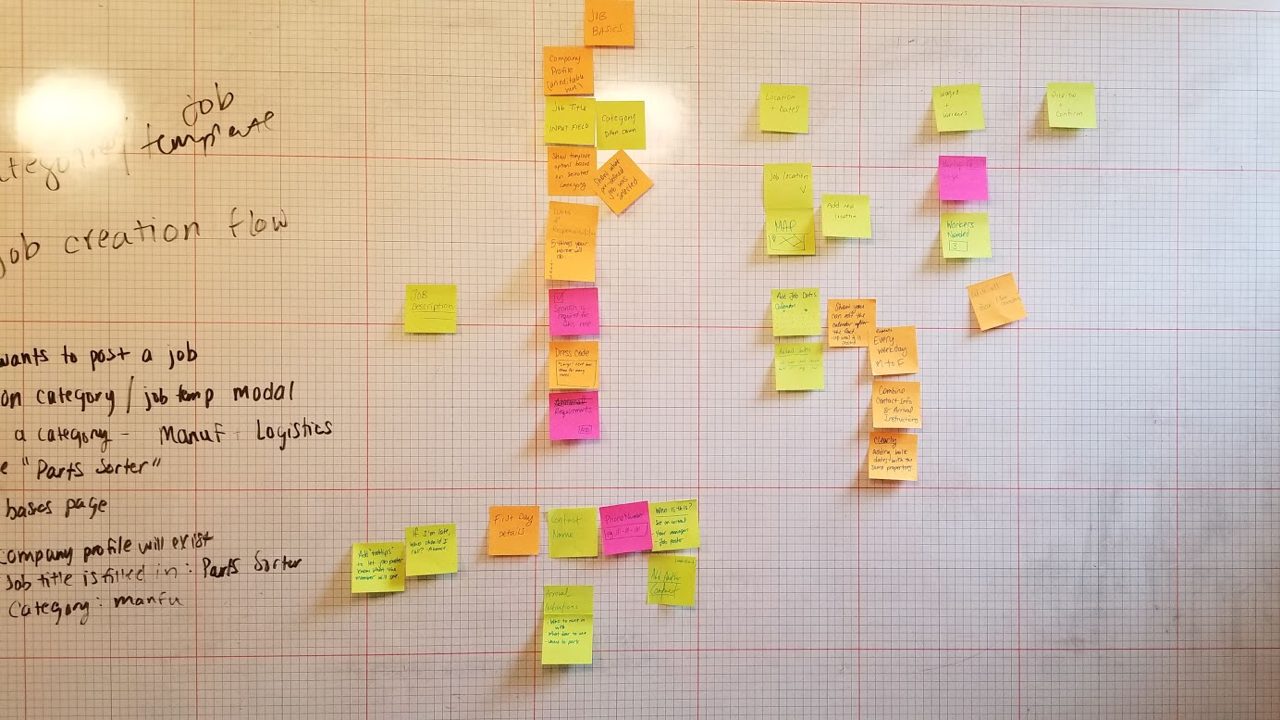
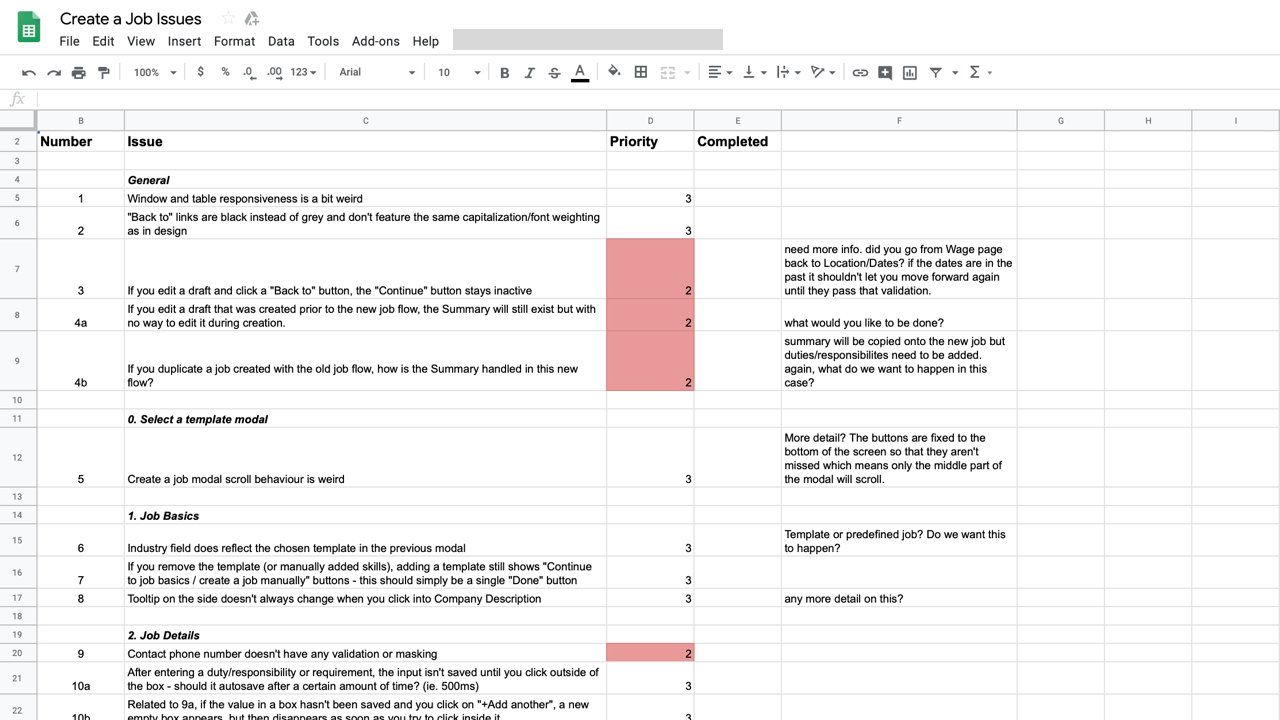
Mapping out flows and looking at pain points/problem areas
Approach
Throughout our findings, it comes up that our current job creation process does not facilitate a learning process. We soon discovered the importance of guiding the user to the correct path and making the information digestible. With these as our main focuses, we began to tackle changing the job creation process to a more friendly system.
Iteration and reiteration
When converting requirements and findings into solutions, we developed a step by step process in which a user will create a job. This primarily serves to break down our current process into digestible, related, and small sections to work through. tilr’s new job creation process is designed to make it easier to understand and clearly see the overall job requirements.
How might we both teach best pratices while also presenting contexually relevant information?
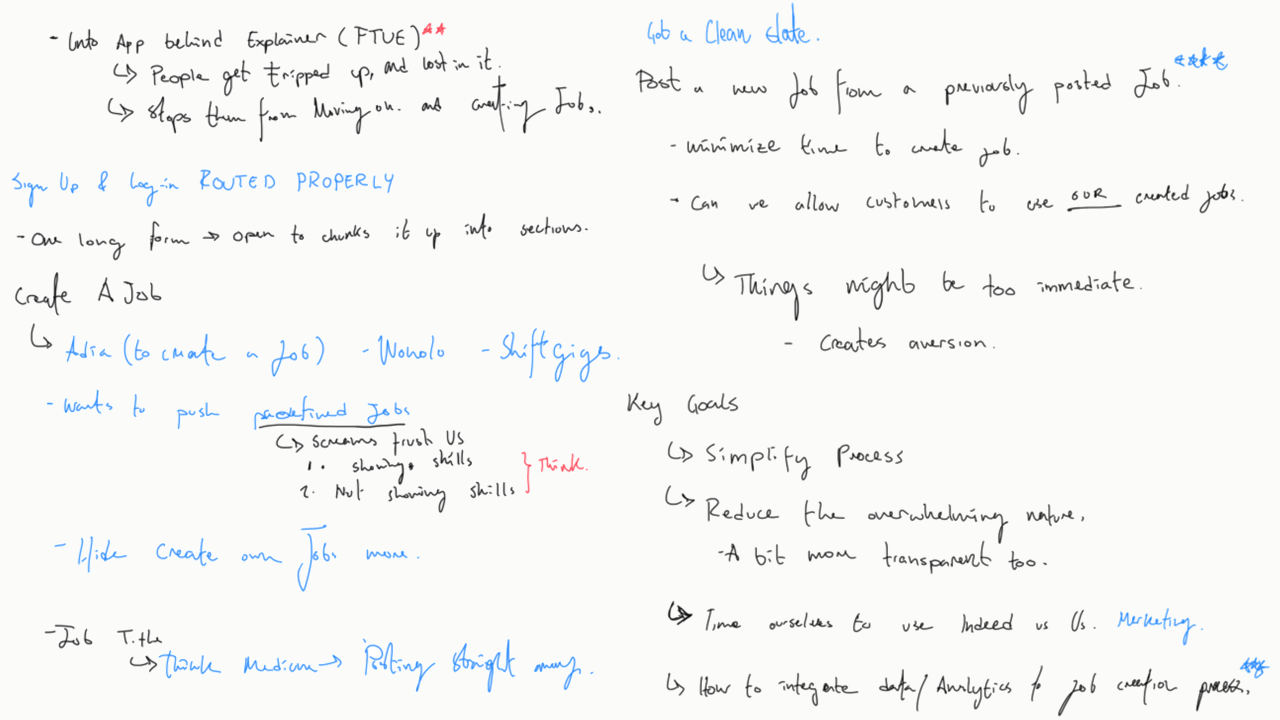
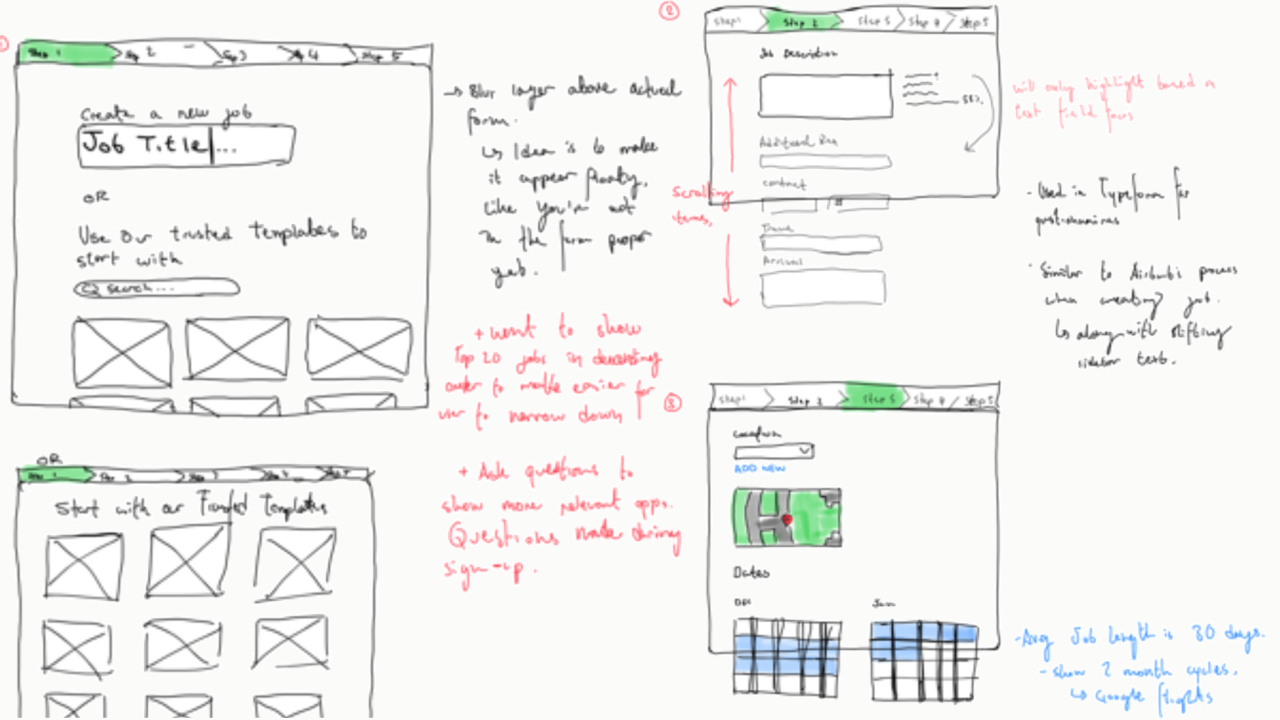
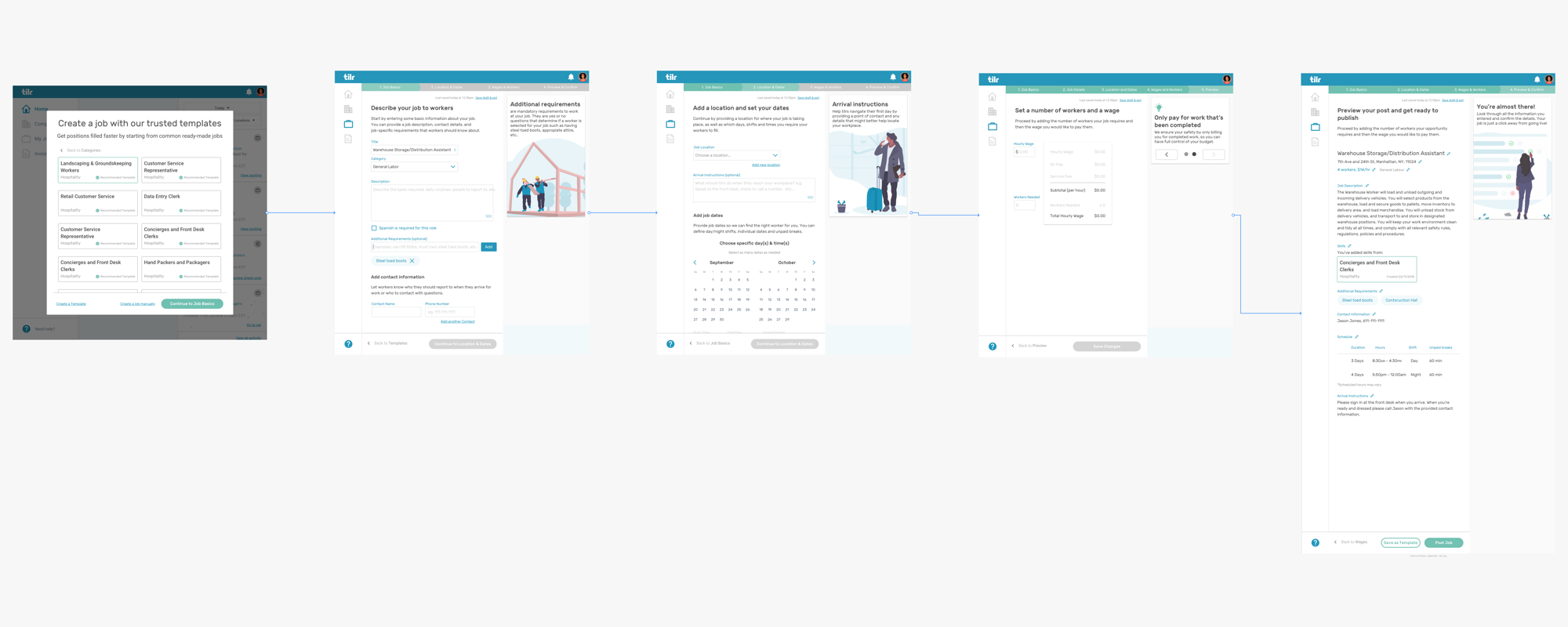
An early iteration of the process of creating a job.
In order to further facilitate our guiding of the user, we created a guiding sidebar that gives the user the most relevant supplementary information at the time, or to explain why certain sections provide value to you as a job creator and to workers who are viewing the job. *Currently in the shipping process.
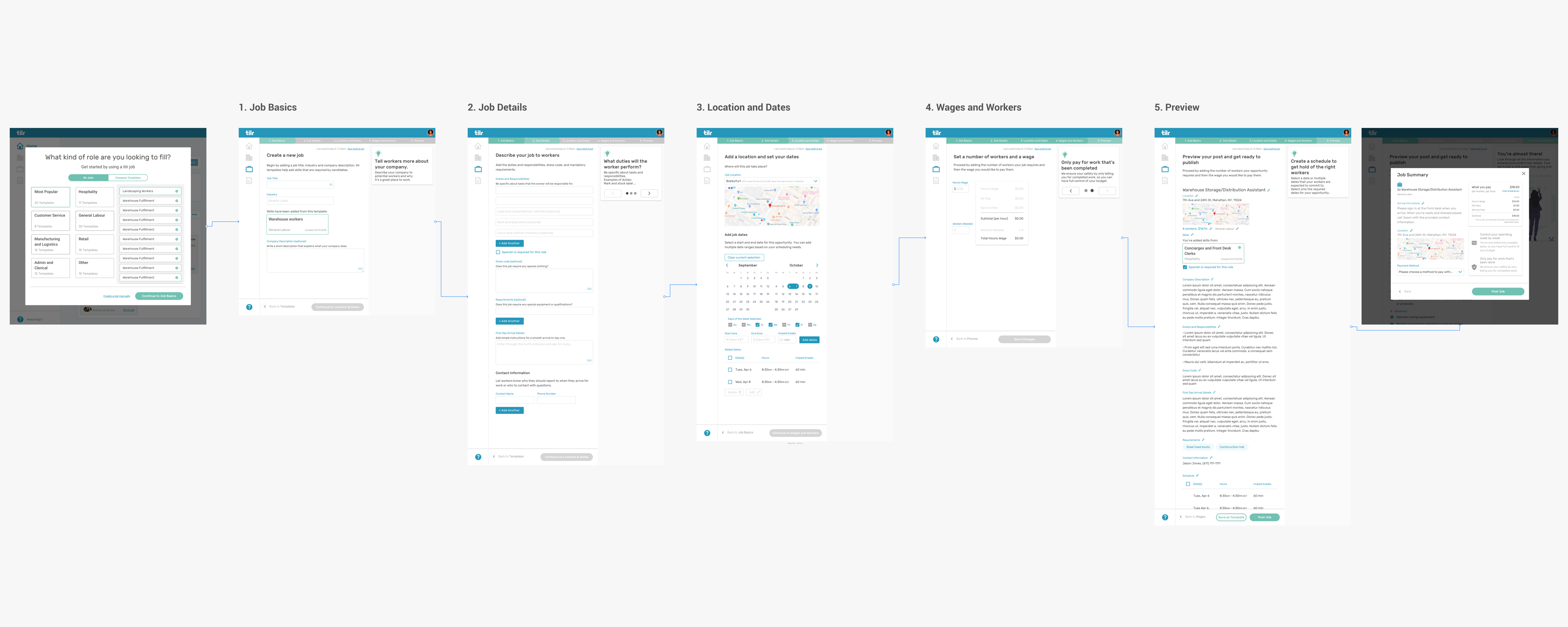
You're able to view tips independently, as well as have them automatically show you contexual information
Reflection
Designing to create solutions that empower users.
Being able to directly address huge usability flaws for our interal MEF team, as well as address the lack of self service for our users has been a highlight of my work at tilr so far. I'm grateful for their support, patience, and emphathy towards me, and I wouldn't be the designer I am today without their guidance.